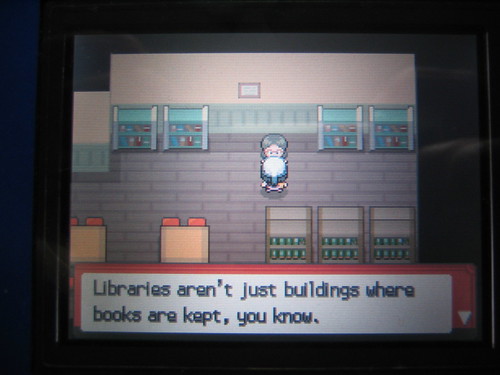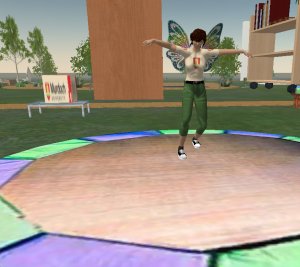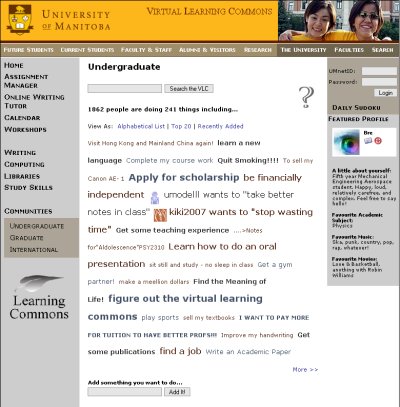What if academics from around the country shared their Teaching and Learning materials and methodologies in a central repository? What if they could create profiles for social networking around those materials and give peer review and create communities of practice?
The Carrick Exchange is being established to encourage this kind of sharing. It is to be administered by the Carrick Institute, a wholly government funded body established to “promote and advance learning and teaching in Australian higher education”. More information was given at the recent paper at Ausweb07 entitled Creativity in the Envisioning of a Collaborative Learning Space: first stages in the development of the Carrick Exchange.
I’m flying to Melbourne on 27th July to be part of a focus group for the Carrick Exchange, giving feedback about “engagement, resource sharing and peer review and commentary”. They are inviting 36 people from around Australia and are ensuring that each group includes some representation of:
- Academics who seldom use technology but are interested in learning and teaching;
- Members of cross-institutional teams (Carrick grant holders, consortiums etc);
- Educational developers
- Librarians
- Staff developers
- “Early adopters” or “front runners”; and
- Repository representatives
I’m very glad to see the “L” word in the list. When I read through the preliminary information I thought “this is about storage, access and retrieval, this is about engagement of users, this is about creating community hubs – this looks like a library to me – albeit one with user created content”. Any librarian who knows her stuff would be able to establish and maintain the straightforward parts.
Where it stops being straightforward is in the areas of acquisition, reference, administering social profiles, authentication and taking it to the users’ own tools. New forms of libraries and librarianship will require librarians to know about these in the future. Here’s the challenges I see, and that I am very glad not to have to solve:
Acquisition The Carrick Exchange would be a repository created by its users for its users. Academics currently get funding and prestige based on their unique ideas and research. It’s like bread to the baker. To populate their repository, the Carrick exchange asks them to give these over and share their material. To encourage this, would the Exchange need to mimic the academic environment by offering prestige, peer review and/or grants?
I don’t know about you, but if I had to repackage a superbly engaging info literacy class into formal academic writing for peer review, then the work involved would discourage me from submitting it – and the soul would have probably been sucked out of it anyhow. Some academics are also incredibly protective of their copyright in material they create.
Reference Most libraries have trained professionals who answer questions about the collection and its systems. Our OPACs and federated search software may suck, but at least librarians know how to squeeze comprehensive, fine-tuned answers from them. They build up relationships with the users and know complementary resources outside the scope of their institution. The Carrick Exchange would be more effective with an officer to show people what is there and how to find it – via chat, email, VOIP, carrier pigeon – whatever.
Administering social profiles Librarians know how to administer records for non-people resources like books and online databases. How is it different when the records in your database correspond to objects that can change their own profile and create content, create other records and create complex links between these? Is it just a few steps on from managing user records where people are rating books and recalling them – or completely different?
Authentication This is recognised as a challenge in the AusWeb07 paper, when the solution suggested is a national authentication framework, allowing the user’s university environment and the Carrick Exchange to fit together seamlessly. I wonder how this fits in with the MAMS (Meta Access Management System) Testbed , which is an Australian Government initiative building a prototype federated Identity and Access Management (IAM) infrastructure for Australia’s Higher Education sector? (MPOW uses it in a joint project ( Online Librarian) with Macquarie library, where a user from Murdoch or Macquarie is directed to the correct institution on login)
Taking it to the users’ own tools. Do any of us need yet another place to go, or another social network? I wonder whether they have considered any of the methods that libraries are beginning to use for working with the users’ tools ?
Of course, my musings are probably not the type of thing we’ll be asked about in the focus group. I’m just intrigued by the librarianship puzzles it holds. I’m looking forward to finding out exactly what we’ll be discussing and meeting with the other group participants.
If you have any ideas or comments about the proposed Exchange, I’d love to hear them.




